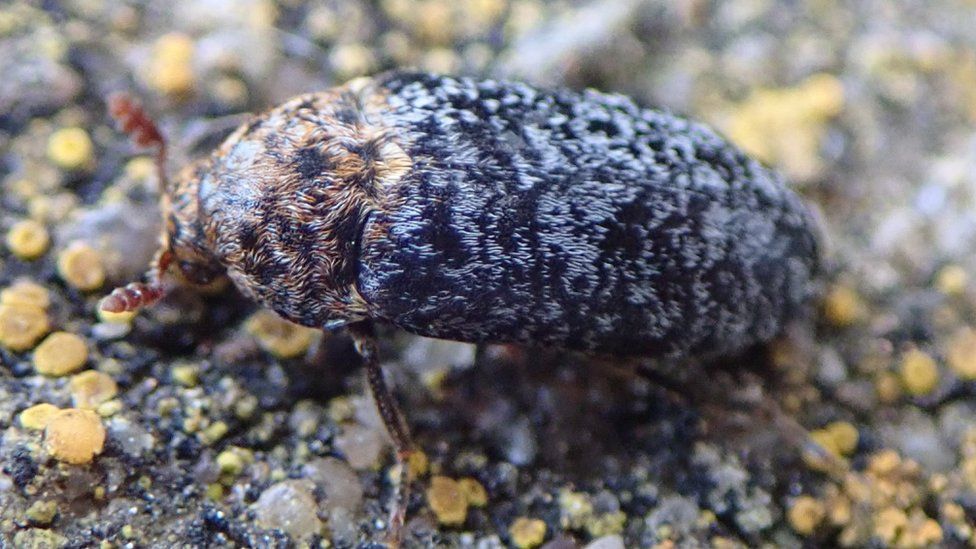Rare 'skin eating beetle' found on Flat Holm Island
- Published

Dermestes undulatus beetles feed on the skin, fur and bones of dead animals.
A rare species of "skin eating" beetle has been found living on an island off the coast of Cardiff.
The Dermestes undulatus beetle was found on the remote Flat Holm island, and scientists believe it could be the species' last stronghold in the UK.
"These tiny beetles feed on the skin, fur and bones of dead animals," said Flat Holm community engagement officer, Sarah Morgan.
"It's not for the squeamish - Dermestes literally means skin eater."
This is the first time the species has been recorded in Wales, and a sighting has not been recorded in England since 2020, said Cardiff council.
Discovered by a visiting team of ecologists, the beetles were found on Flat Holm Island, four miles (6.4km) off the coast of Cardiff.
Based in the middle of the Bristol Channel, the island has no mains power or water and is exposed to extreme weather.
"Exactly how the beetle made it out to the island is a bit of a mystery, but it's possible they were brought by gulls carrying scavenged remains," said Ms Morgan.
She added that their preference for eating skin "makes them a bit of a pain in museum collections, but incredibly useful in forensic science to help determine how long a body has been in situ".
Flat Holm Island is just four miles away from Cardiff.
Since the Dark Ages, Flat Holm has been a retreat for monks and has also acted as a sanctuary for Vikings, Anglo-Saxons, silver miners, smugglers and cholera victims.
Fortified in Victorian times and again in World War Two, it is famous for its role in the invention of radio, as well as being home to unique lizards, flowers and birds.
It is also a site of special scientific interest (SSSI) due to its gull colony, which makes up 20% of the Wales' population of the bird
YR WYDDFA: Life on Britain's busiest mountain
HOLLYWOOD OR BUST: How Wrexham AFC became a global sensation
- Published19 August 2023
- Published23 February 2023
- Published27 May 2022